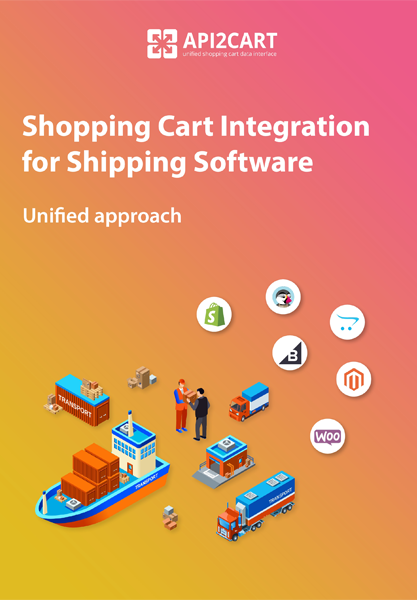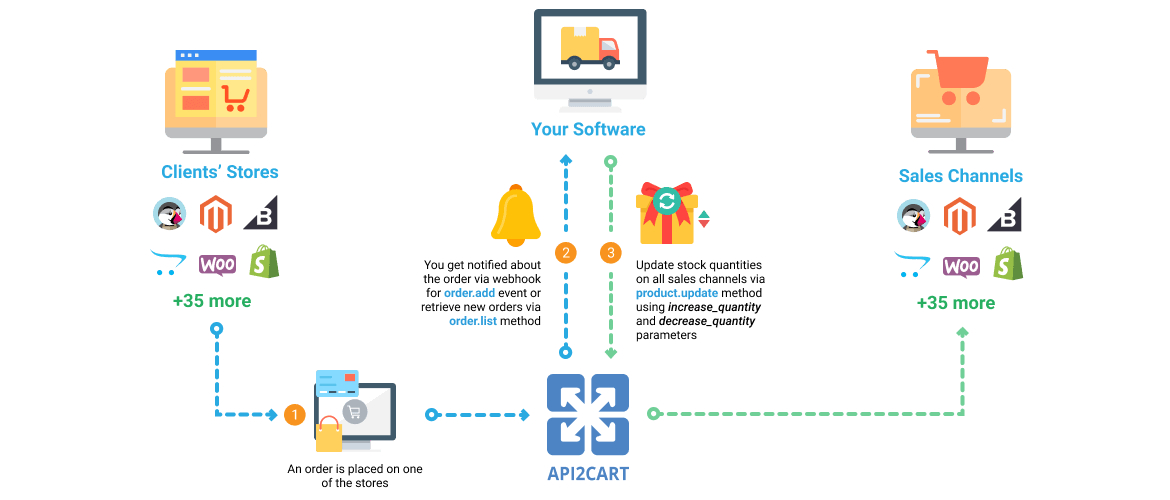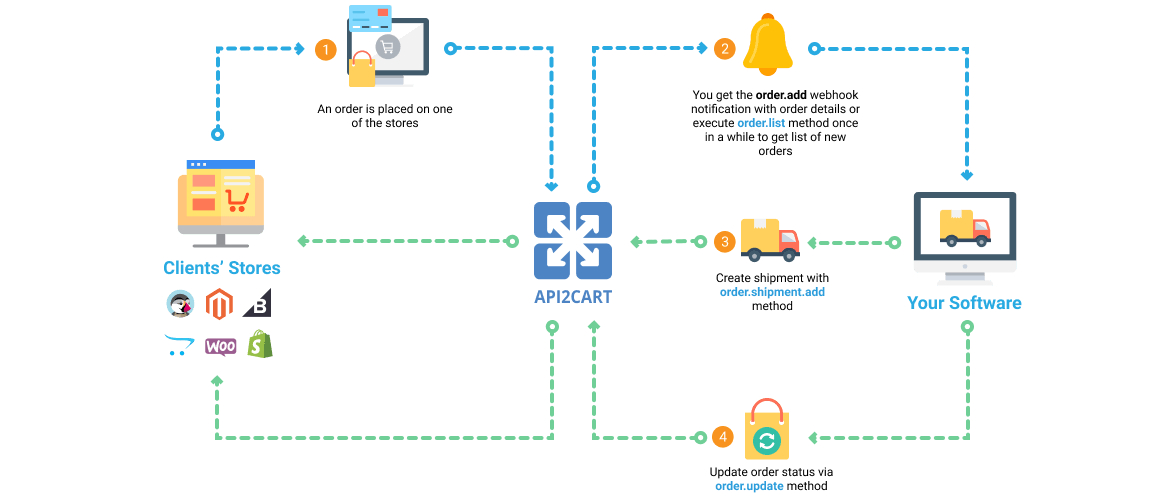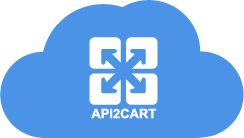Download Use Case for Shipping Software



Good Integration with shopping carts and marketplaces is the lifeblood of your business.
It powers the majority of features and processes that every shipping management system covers. Read more in the Use Case
Why Use API2Cart for Developing Your Shipping Software Integration with eCommerce Platforms
API2Cart has everything for easy shopping cart shipping integration and all methods needed to manage shipping operations
- Integrate your shipping software with shopping cart solutions and marketplaces you need
- Import orders from multiple sales channels
- Gather info on orders, customers, products, tracking numbers and shipping addresses
- Update tracking info and order statuses
- Create shipping labels
API2Cart-Shipping Software Integration Workflow




What Our Clients that Provide Shipping Services Say About API2Cart

Unified shopping cart integration saves you
Time
Develop your shipping software integration with dozens of platforms via API2Cart unified API.
It's months of expensive development work avoided
Money
Minimize TCO. In-house IT costs on integration with multiple shopping carts are up to 9 times more expensive than integration via API2Cart
Human resources
Concentrate on what matters for your business. We take care of
platform updates / the API maintenance










